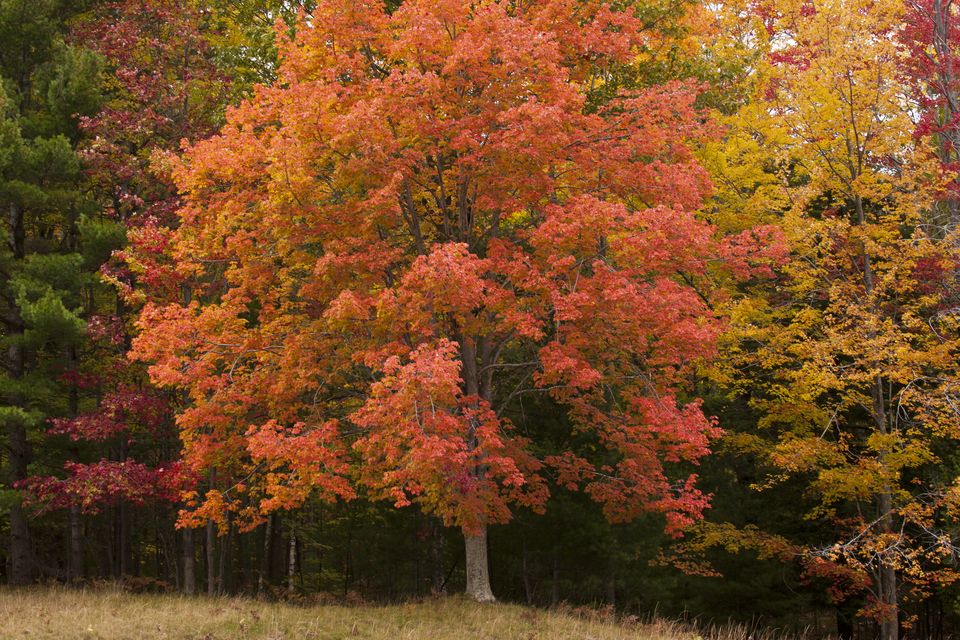
From clearing leaves to revamping pots and planting spring bulbs, it’s time to get your plot ready for the cooler seasons There’s plenty of clearing to be done at this time of year with leaves already dropping Lilac tree Sorbus hupehensis Pink Pagoda In our climate, the seasons cede gently into each other. We are allowed to feel let down by the summer. It’s been cool and rainy, and many of our gardens haven’t performed as we might have hoped.
Lots of our flowering plants and fruit and veg love sunshine. The weather, however, had different ideas and gave us a great season for slugs. So my sadness this year about summer leaving is tempered by a hope for the next season.

Autumn can be magnificent and it’s good, in the early days of it, to consider what happens in our plots. The days are shorter and the soil is cooler. Because plant growth is triggered by the amount of daylight hours and a warming soil, this begins to go into reverse.
Growth slows and the foliage of deciduous trees and shrubs changes colour. They cease chlorophyll production in preparation for their winter dormancy. As the green pigment of chlorophyll recedes, other pigments such as orange and yellow carotenoids become visible.
In some trees, such as red oaks and maples, sugar in the leaf increases and forms anthocyanins, creating vibrant crimsons and pinks. All these changes can result in magnificent autumnal displays. Perennials also start to slow down.
Their flowers fade and, once they have set seed, their job for the year is over. By now, many seeds have fallen and are being dispersed by the wind or other creatures. However, underneath, the soil is the slowest to cool down so root growth is still active, making this a good time to plant perennials or lift and divide them.
Other plants are toughening up for the winter. Outer cell walls on evergreen leaves and stems develop a slightly stronger armour, preparing for worsening weather in the year. So what gardening jobs are to be done at this juncture? There’s plenty of clearing to be done with leaves already dropping as well as the herbaceous border turning soggy.
All can go to the compost heap or you can collect leaves in bin bags to make leaf mulch. Punch a few holes to allow for drainage and put aside — this time next year, you will have crumbly dark compost which will make a good-looking mulch. If you’ve compost that is ready to go after being cooked all summer, now’s the time to use it as a mulch around the base of every plant.
It will act as protection, nutrition and weed suppression. It’s out with the old and in with the new for hanging baskets, pots and containers. Once the summer displays are exhausted, clear out pots and, using fresh compost, have some fun creating new pots to bring you through winter and into spring.
A mix of evergreens, such as carex, ivies, ferns, heathers and heucheras can form the structure to which you can add colourful highlights with autumn flowering bulbs such as nerines and hesperantha. Plan ahead for spring with tulips, daffodils and hyacinths and biennials such as wallflowers and forget-me-nots. The shops are selling spring bulbs now so get purchasing before the choice disappears.
You can start planting bulbs from now but there’s no hurry as this job can be done in October and November as well. Sorbus hupehensis Pink Pagoda Sorbus hupehensis Pink Pagoda (Rowan/mountain ash) The common mountain ash tree is laden with very bright orange-red berries which will provide a great source of food for birds over the winter. Sorbus hupehensis Pink Pagoda has pretty pink berries.
It’s a good tree for small gardens as it doesn’t grow too big, has attractive blue-green pinnate foliage which turns red in autumn, and plenty of white spring flowers that the bees will love. Good on most soils in sun or dappled shade. My lilac tree which I planted last year isn’t doing well – the leaves are curling and going brown.
Should I move it in the coming months? M O’Brien Lilac tree This could be due to water stress, poor soil drainage, or insufficient sunlight. Before moving it, ensure it’s getting consistent moisture, well-drained soil, and plenty of sunlight. If conditions are already ideal, you could consider moving it in early spring or autumn to a better location.
Submit your gardening questions to Diarmuid via his Instagram @diarmuidgavin using the hashtag #weekendgarden Join the Irish Independent WhatsApp channel Stay up to date with all the latest news.














